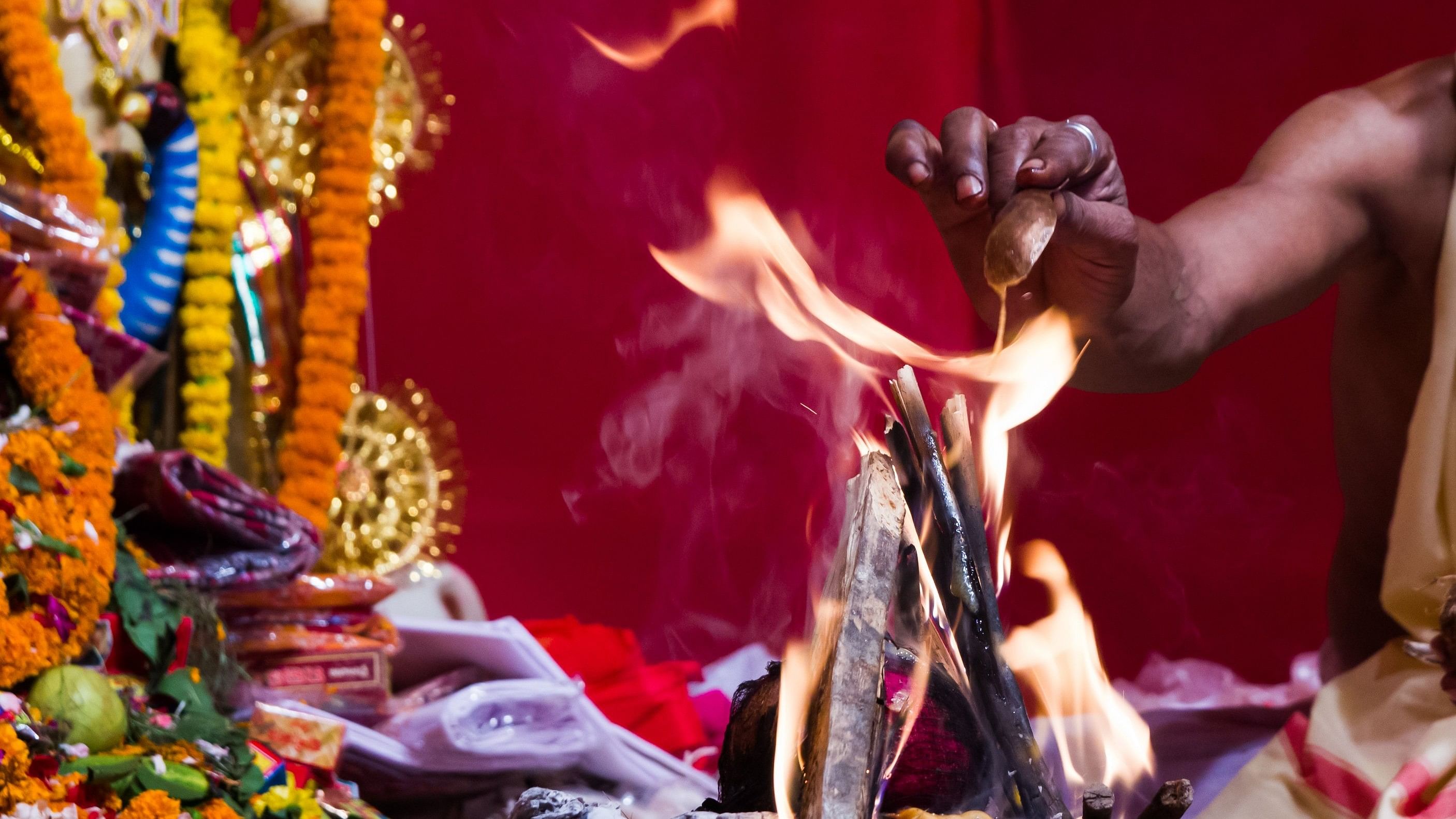
'One of the key features of Agama is the obsession with pollution and purification'.
Credit: iStock Photo
Nowadays, if you hear panel discussions that include a South Indian Brahmin who uses a lot of polemics in favour of decolonising India, you keep hearing the word ‘Agama’ a lot — and most people in India do not know what an Agama is.
Agamas are essentially manuals that were produced to manage temples. It is mainly, though not exclusively, a South Indian phenomenon, where there were vast temple complexes controlled by the Brahmins. These are not more than a thousand years old, and every temple has its own Agama, which is circulated among the temple managers who are mostly Brahmins.
The Agama explains how the temple has to be built, the artwork on the temple walls, the form of the main deity as well as deities in subsidiary shrines, rituals that have to be performed to ensure that the deity is enlivened, a ritual called ‘Pran Pratishtha’, and how the deity has to be taken care of through daily rituals, fortnightly rituals, monthly rituals, annual rituals, and also festivals that occur annually, every 12 years, and every 24 years.
Therefore, the Agamas contain a lot of information about the ritual conduct of priests, and the purification rituals that they must follow. Therefore, it contains a lot of underlying information related to the body, the subtle body, occult practices, and mystical beliefs. There are stories from mythology, there is Vedanta philosophy which explains concepts like Brahman and Atma.
Agama, basically means tradition or that which comes down to us. So, it is seen as a man-made creation, an artificial creation and, therefore, is distinguished from the Vedas which is called Nigama, which is considered to be divine, sacred, natural, outside human imagination, and received wisdom. Agama is different from Sthala Purana which tells the story of why a site is sacred. Agamas are essentially about temples.
We must remember that temples were not always part of the Hindu ritual fabric. We do not hear much about temples in the early Dharmashastras, including Manusmriti (around 300 AD). In fact, temple priests are looked down upon. The ‘real’ Brahmin was the one who chanted Vedic hymns and performed Vedic rituals. Temples emerged very slowly, and became popular from the 8th century onwards when temples started receiving land grants from kings, especially around the Kaveri and Krishna river delta. This was the zone that gave us Ramanuja (11th century) and Madhva (13th century).
These grants were given to the temples via the Brahmins, and this made the Brahmin community very powerful; and using the wealth of the tax-free lands that they received, the fabulous temples of India were made. They were mostly made in South India. We do not find many temples in North India. The reason for the absence of many grand temples in North India has been attributed to the Muslim invasion. Temple clusters in hilly regions that have been built in Himachal Pradesh and Uttarakhand are not linked to vast agricultural resources as in the south, and so are not connected with grand Brahmin societies known as the agrahara.
What is important about the Agamas is that they are often called Tantras. They belong to different sects. Vaishnava Agamas are called the Pancharatra texts. Then there is the Shaiva Agama. The idea of Agama also spread to Southeast Asia. They have been traced to Kashmir as well.
One believes there is a network of Brahmins that moved from Kashmir down the Gangetic plains to Puri in Odisha, and from there to the southern regions. The other route was down the Indus River to Gujarat and along the western coast. Thus, the four corners of India were covered by the Agama rituals.
One of the key features of Agama is the obsession with pollution and purification. The gods must be kept pure and the people who come in contact with them must be pure — and, therefore, the Brahmins have to follow strict rituals to be pure. The food must be kept pure.
This creates a concept of pollution, and played a key role in establishing the practice of untouchability whereby some people were allowed to enter the temple, some were not, and, therefore, some people were deemed so impure that they were not even allowed to enter the vicinity of the settlement in which the temple was located.
This is the dark side of Hinduism, which nobody likes to talk about while discussing decolonisation. So, while people glamorise the Agama, it is important to remember its role in creating untouchability.
Devdutt Pattanaik is the author of more than 50 books on mythology. X: @devduttmyth.
Disclaimer: The views expressed above are the author's own. They do not necessarily reflect the views of DH.